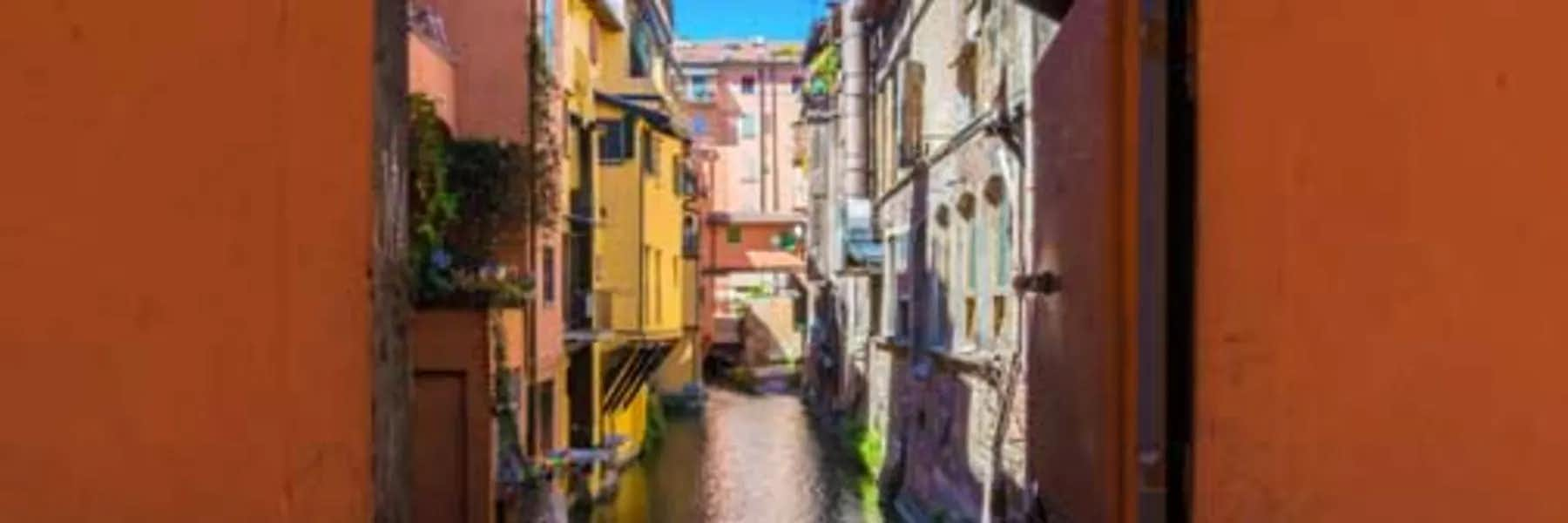In recent years Bologna, the lively historic capital of northern Italy’s Emilia-Romagna region, has welcomed a record number of visitors and has become firmly fixed on the map as an expat destination. It boasts the oldest university in the world, top class culinary tradition, and a vibrant, liberal-minded character. It also has several days’ worth of free things for a clued-in visitor to enjoy. Here are five of my favorites…
1. Visit the church of Seven Churches
The religious complex of Santo Stefano is like a Russian doll of churches. Reportedly built on the remains of a temple to the goddess Isis, it has an almost encyclopedic array of church styles all within one complex. The oldest structure, dating from the 4th century, but rebuilt in the 12th, has Roman and Byzantine column capitals and 6th-century mosaics. Beside this you can see a copy of the round Holy Sepulcher in Jerusalem dating from the 12th to 14th centuries, then a Lombard structure with a presbytery from the 17th century, a Romanesque courtyard and several small chapels with Renaissance and Baroque decoration. Don’t forget to go right to the back of the complex, after the museum, to the Chapel of the Bandage, which is dedicated to the strip of cloth thought to have been worn around the Virgin Mary’s head as a sign of mourning.
2. Discover the window on Bologna’s hidden canals
Opening a small wooden window in the wall of Via Piella, you will discover a little canal flanked by brightly colored houses with flowers and balconies. This surprising stretch of water is actually part of a whole network of canals that was constructed in the 12th century. There are several points in the city where these can still be seen (a map can be acquired from tourist information), though the window on Via Piella is no doubt the most poetic. Just remember to close the window afterwards so you don’t spoil the surprise for others.
3. Peruse books above a Roman ruin
Bologna’s underground secrets don’t stop at canals. At central public library Sala Borsa, once the historical seat of the city government, look down as you walk into the large atrium and you will see Roman ruins beneath your feet, including paved roads, the foundations of a Roman basilica, and the wall of the medieval tower house. The ruins are open to the public and there are even free guided tours (donations welcomed).
4. Make a pilgrimage to San Luca
Only in Italy would the residents’ local dog walking path be a pilgrimage route. Bologna is renowned for its “portici,” or arcades, which run all throughout the city. One of these routes, rather ironically of 666 arches, forms a pilgrimage route leading up the Monte della Guardia hill to the Sanctuary of the Madonna of San Luca. Summer evenings finds runners, walkers, and even elderly ladies in kitten heels tackling the relatively steep climb to the top. Once you’ve caught your breath, you can explore the 18th-century church and look out across the city and surrounding countryside. There are even sometimes groups of students with guitars enjoying the sunset.
5. Admire Giambologna’s well-endowed Neptune
As a bit of light-hearted relief from pilgrimages and ruins, the cheekier locals will take visitors to appreciate Giambologna’s bronze statue of the god Neptune, or rather one particular part of him. It stands in Piazza del Nettuno and is a classic muscular, contrapposto Giambologna masterpiece. But some suggest it also contains a veiled defiance against prudish church restrictions on Neptune’s manhood. From a certain angle to the back right of the statue, Neptune’s thumb is positioned in such a way to suggest a far more virile god of the sea.
The statue stands just off the main Piazza Maggiore of Bologna, a real hub of the city. On one side is the Basilica of San Petronio, which is free to enter and contains the longest indoor meridian line in the world, as well as a rare fresco of the Prophet Muhammed in Hell.
Related Articles
10 Things To Do In Italy…for that Uniquely Italian Experience
